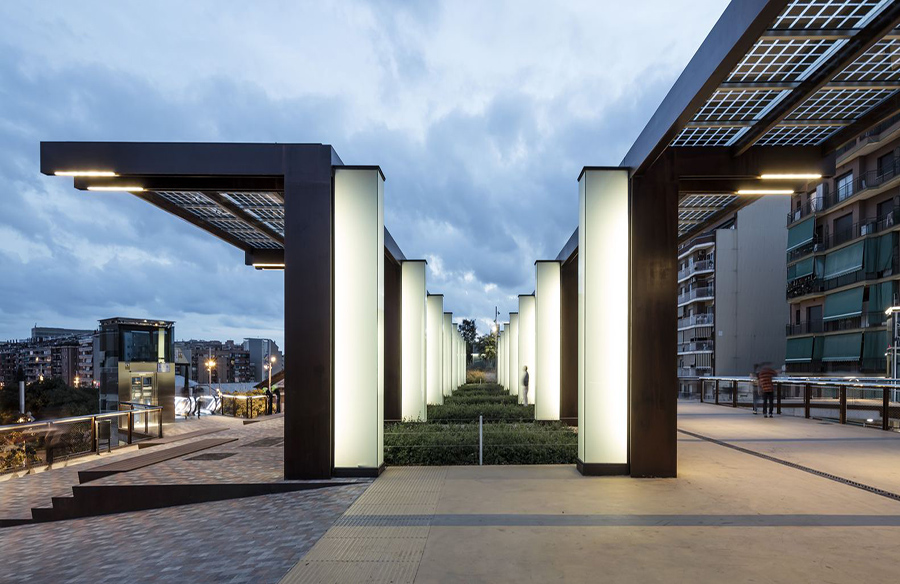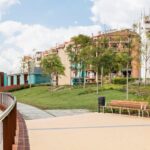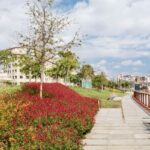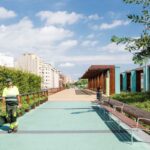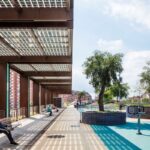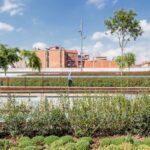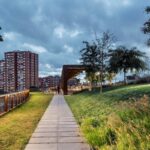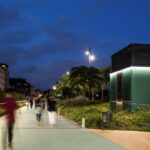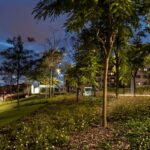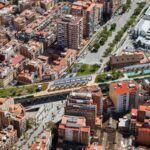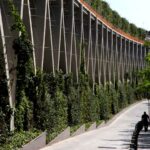Introduction to the Project
For decades, the railway tracks traversing Barcelona’s Sants district have served as a divisive barrier, disrupting the urban landscape and contributing to various urban issues such as noise pollution and environmental degradation. In response to these challenges, Sergi Godia and Ana Molino architects embarked on a visionary urban renewal project aimed at revitalizing the area and reconnecting the divided parts of the district.
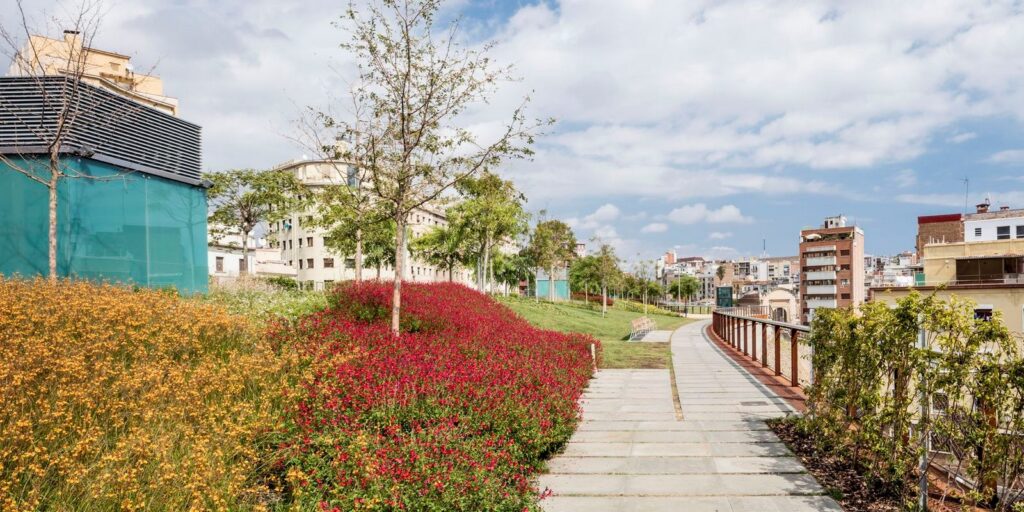
The Urban Renewal Initiative
In 2002, the city administration initiated an ambitious urban renewal project for the Sants railway corridor. Rather than opting for underground solutions, the decision was made to enclose the railway within a lightweight, transparent structure, creating an 800-meter-long raised and landscaped boulevard. This innovative approach aimed to transform the railway corridor into a vibrant green space, fostering connectivity and revitalizing the surrounding neighborhoods.
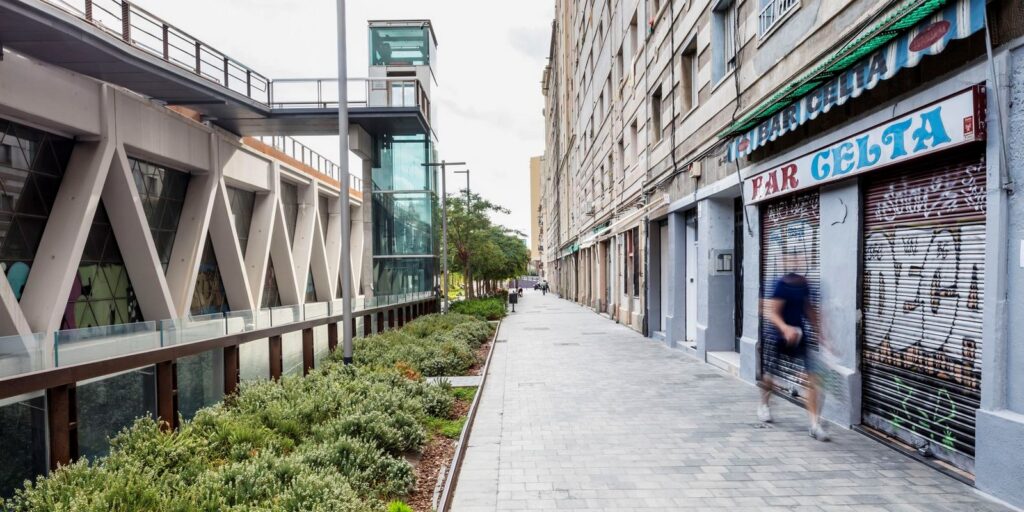
Architectural Design and Features
The architectural design of the raised gardens is characterized by a combination of prefab concrete parts arranged diagonally to form a Warren beam structure, reminiscent of traditional railway bridges. This design not only supports the transparent enclosure but also minimizes the acoustic impact of passing trains. By leaving large empty triangles in the structure, the architects introduced natural light while creating opportunities for glazed elements, offering glimpses of the trains passing through the city.
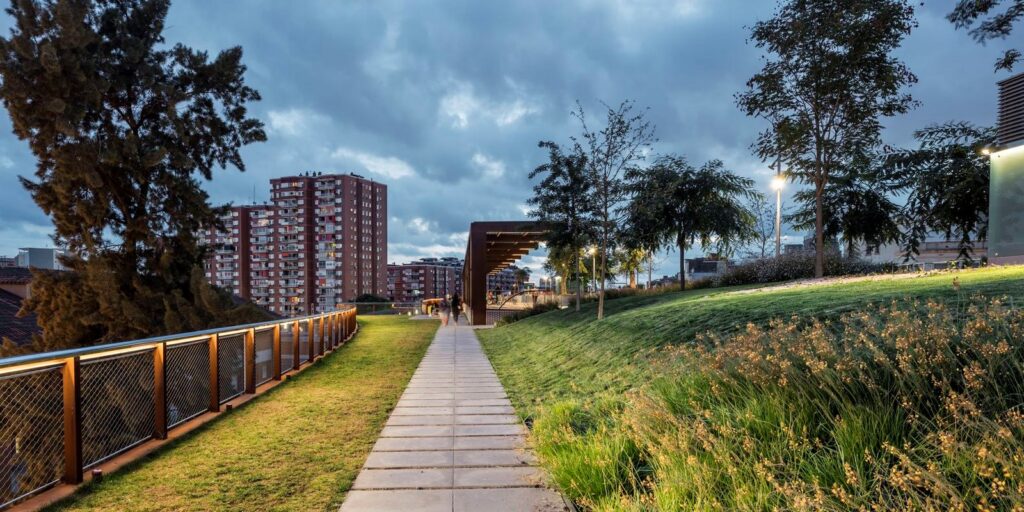
Integration with Nature
The rooftop gardens serve as a tranquil oasis amidst the urban landscape, offering panoramic views of the city. Structured along two linear routes—one shaded by trees and the other bathed in sunlight—the gardens feature a diverse array of plantings carefully selected to thrive in the rooftop environment. Dense tree groves and strategic topography create immersive natural environments, providing visitors with a serene escape from the hustle and bustle of city life.
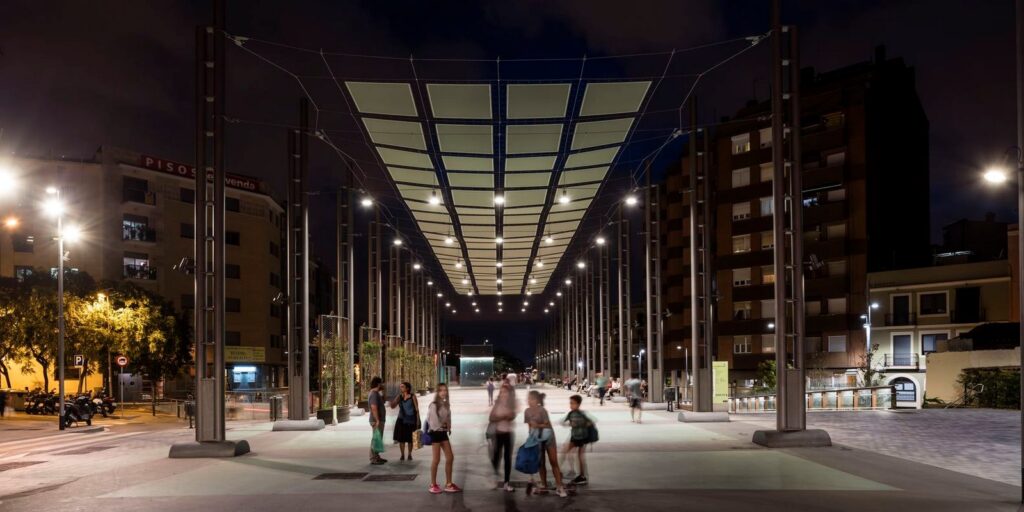
Plant Selection and Landscape Design
The gardens boast a variety of tree species, including Tipuanas, Sophoras, Koelreuterias, and Malus ‘Evereste’, known for their vibrant flowers and foliage. Complementing the trees are shrubs and ground cover such as Bulbine, red salvia, wild roses, and Hedera Helix, carefully distributed to create visual interest and enhance biodiversity throughout the space.
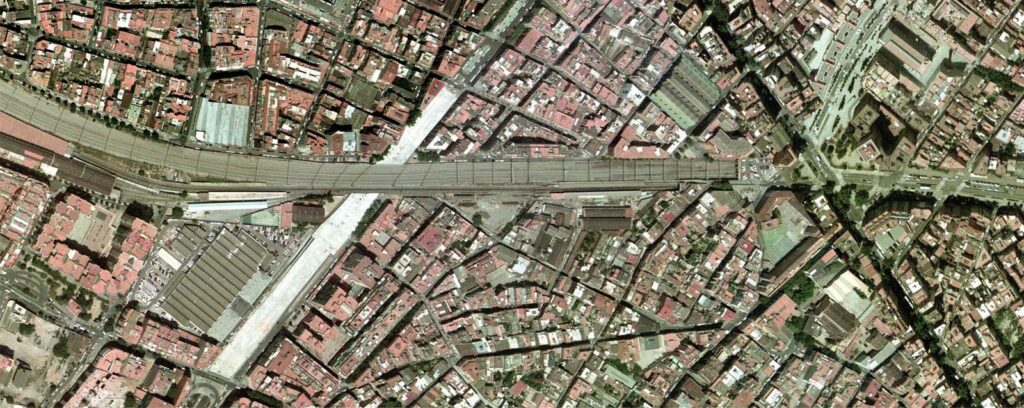
Conclusion
The Raised Gardens of Sants in Barcelona represent a transformative urban intervention that transcends traditional notions of public space. By seamlessly blending architectural innovation with sustainable landscaping, Sergi Godia and Ana Molino architects have revitalized an urban corridor, creating a vibrant green oasis that reconnects communities and celebrates the natural beauty of Barcelona’s Sants district.


